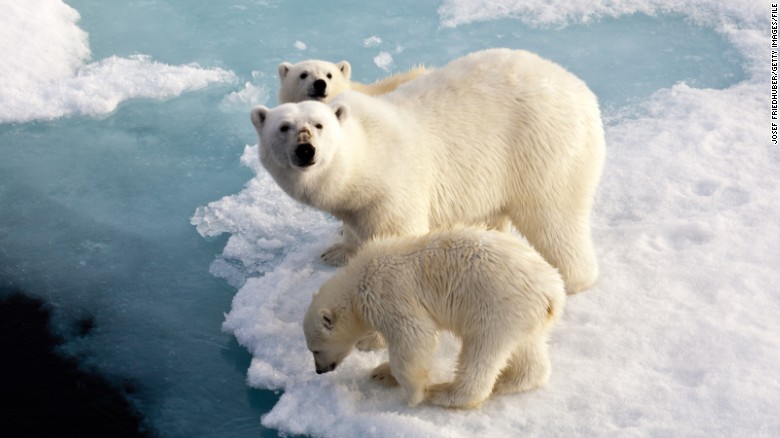Posted On: 08/29/2016 12:04:18 PM
Post# of 65629
Quote:
The 5 telltale techniques of climate change denial
By John Cook
Updated 12:25 PM ET, Wed July 22, 2015

http://www.cnn.com/2015/07/22/opinions/cook-t...ge-denial/
John Cook is the Climate Communication Fellow for the Global Change Institute at the University of Queensland. He created the website Skeptical Science.com, which won the 2011 Australian Museum Eureka Prize for the Advancement of Climate Change Knowledge. Cook co-authored the college textbook "Climate Change Science: A Modern Synthesis" and the book "Climate Change Denial: Heads in the Sand."
In 2013, he published a paper analyzing the scientific consensus on climate change that gained worldwide media attention, being mentioned by President Barack Obama and U.S. Secretary of State John Kerry.
It was awarded the best paper of 2013 published in Environmental Research Letters. The opinions expressed in this commentary are his.
(CNN)There is overwhelming scientific evidence that humans are causing global warming. Nevertheless, a small proportion of the population continues to deny the science. This can be problematic when the small number denying climate science includes half of the U.S. Senate.
How do you identify climate science denial, and how do you respond to it? To address denial properly, you need to understand the telltale techniques used to distort the science. It turns out all movements that deny a scientific consensus, whether it be the science of climate change, evolution or vaccination, share five characteristics in common:
1. Fake experts
Ninety-seven percent of climate scientists agree that humans are causing global warming. This has been found independently in a number of studies, including surveys of Earth scientists, analysis of public statements about climate change and analysis of peer-reviewed scientific papers.
How might one cast doubt on the overwhelming scientific consensus? One technique is the use of fake experts.
We see this in online petitions such as the Global Warming Petition Project, which features more than 31,000 scientists claiming humans aren't disrupting our climate. How can there be 97% consensus when 31,000 scientists disagree?
It turns out 99.9% of the petition's signatories aren't climate scientists. They include computer scientists, mechanical engineers and medical scientists but few climate scientists. The Global Warming Petition Project is fake experts in bulk.
2. Logical fallacies
The reason why there's a 97% consensus is because of the many lines of evidence that humans are causing global warming. Human fingerprints are being observed in heat escaping out to space, in the structure of the atmosphere and even in the changing seasons.
Another denialist technique used to counter the weight of evidence is the logical fallacy.
The most common fallacious argument is that current climate change must be natural because climate has changed naturally in the past. This myth commits the logical fallacy of jumping to conclusions.
It's like finding a dead body with a knife sticking out of its back, and arguing that the person must have died of natural causes because humans have died of natural causes in the past. The premise does not lead to the conclusion.
3. Impossible expectations
While many lines of evidence inform our understanding of climate change, another source of understanding are climate models. These are computer simulations built from the fundamental laws of physics, and they have made many accurate predictions since the 1970s.
Climate models have successfully predicted the loss of Arctic sea ice, sea level rise and the geographic pattern of global warming. However, one technique used to cast doubt on climate models is the tactic of impossible expectations.
Some people argue that climate models are unreliable if they don't make perfect short-term predictions. However, a number of unpredictable influences such as ocean and solar cycles have short-term influences on climate. Over the long term, these effects average out, which is why climate models do so well at long-term predictions.
4. Cherry-picking
Signs of global warming have been observed all over our planet. Ice sheets in Greenland and Antarctica are losing hundreds of billions of tons of ice every year. Global sea level is rising. Thousands of species are migrating toward cooler regions in response to warming. The ocean is building up four atomic bombs worth of heat every second.
One way to avoid this overwhelming body of evidence is through the technique of cherry-picking.
For example, a persistent myth is that global warming stopped in recent decades. This is done by focusing on one slice of our climate system -- the surface temperature record.
Further, it relies on cherry-picking short time periods. This ignores the long-term trend and more importantly, ignores the many warming indicators telling us that our planet continues to build up heat.
5. Conspiracy theory
The global surface temperature record is constructed by teams across the world, each compiling their own independent record. These different efforts, each using their own methods, paint a consistent picture of global warming.
Climate science deniers reject this coherent evidence with conspiracy theories.
The thousands of scientists across the world who develop these temperature records are regularly accused of faking their data to inflate the global warming trend. Of course, critics produce no evidence for a global conspiracy.
In fact, a number of investigations into the scientists' methodology has concluded that they conducted their research with robust integrity. How do the conspiracy theorists respond to each exoneration?
By expanding their conspiracy theory to include the investigators!
The link between conspiratorial thinking and science denial has serious and practical consequences. Conspiracy theorists are immune to scientific evidence, as any evidence conflicting with their beliefs is considered part of a conspiracy.
The implication is that the most effective approach is not changing the mind of the unchangeable. Rather a more fruitful approach is communicating the realities of climate change to the large, undecided majority who are open to scientific evidence.
A crucial part of the puzzle is explaining the techniques of science denial. This has the powerful effect of inoculating people against the misinformation of climate science deniers.
